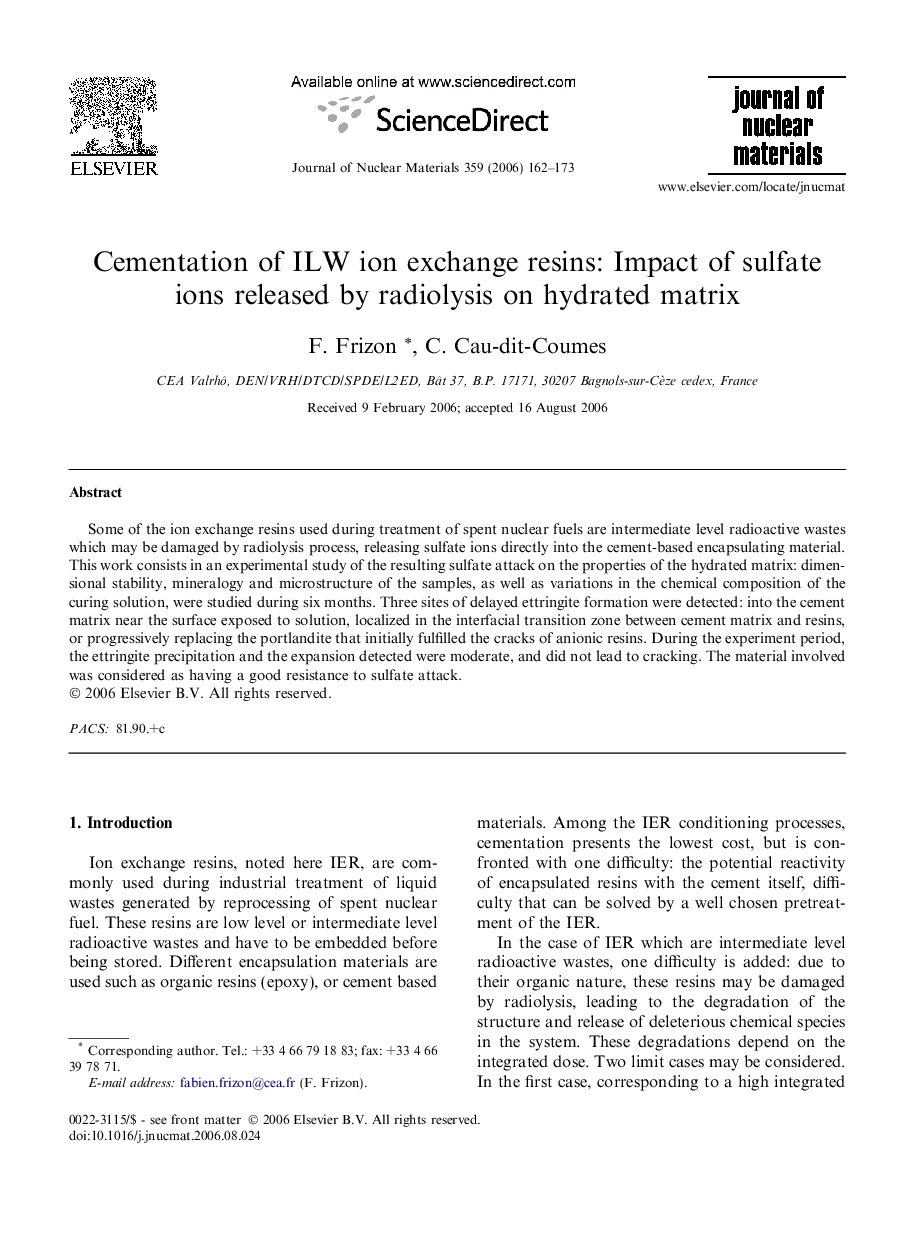| Article ID | Journal | Published Year | Pages | File Type |
|---|---|---|---|---|
| 1569623 | Journal of Nuclear Materials | 2006 | 12 Pages |
Some of the ion exchange resins used during treatment of spent nuclear fuels are intermediate level radioactive wastes which may be damaged by radiolysis process, releasing sulfate ions directly into the cement-based encapsulating material. This work consists in an experimental study of the resulting sulfate attack on the properties of the hydrated matrix: dimensional stability, mineralogy and microstructure of the samples, as well as variations in the chemical composition of the curing solution, were studied during six months. Three sites of delayed ettringite formation were detected: into the cement matrix near the surface exposed to solution, localized in the interfacial transition zone between cement matrix and resins, or progressively replacing the portlandite that initially fulfilled the cracks of anionic resins. During the experiment period, the ettringite precipitation and the expansion detected were moderate, and did not lead to cracking. The material involved was considered as having a good resistance to sulfate attack.
